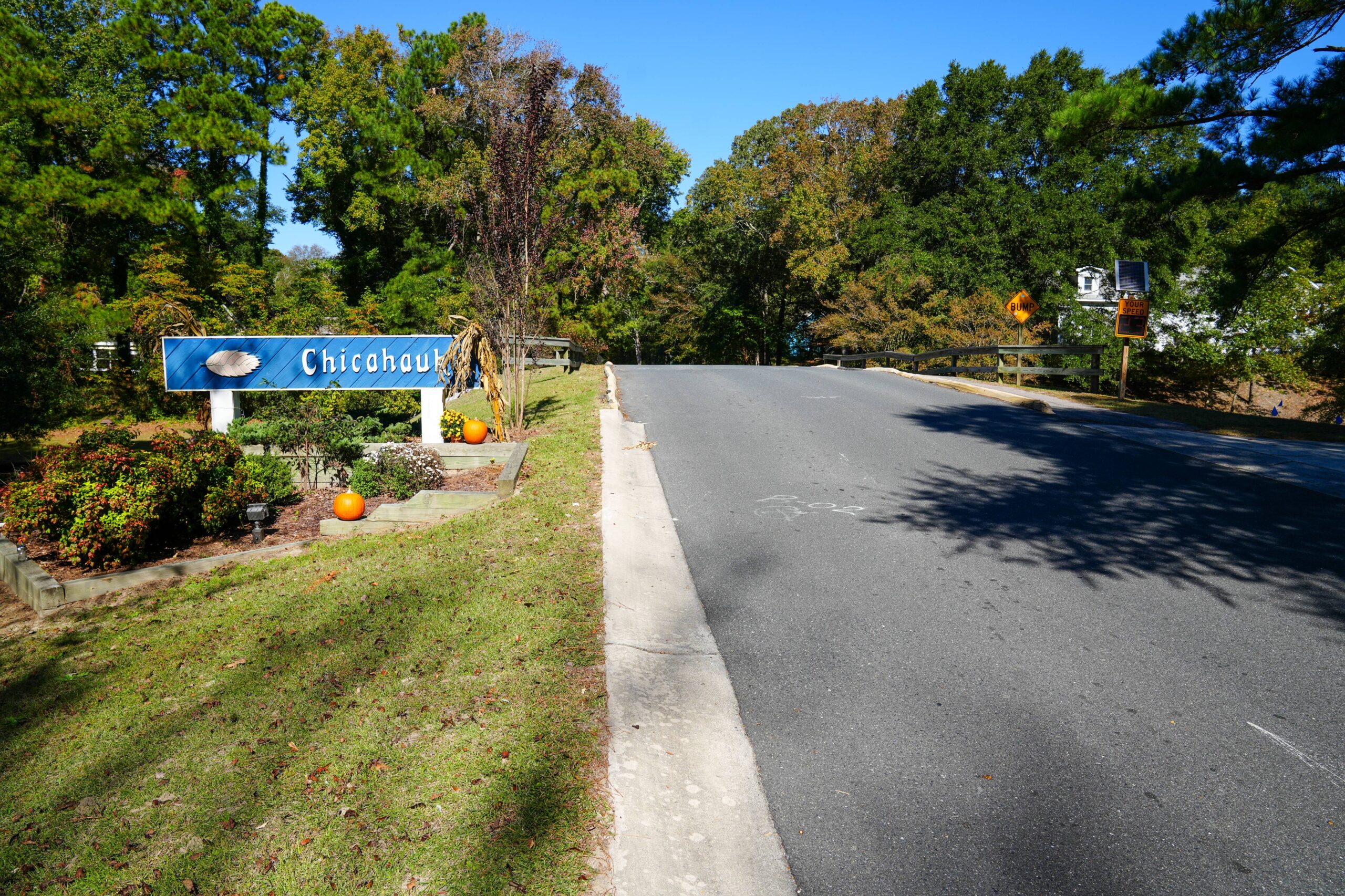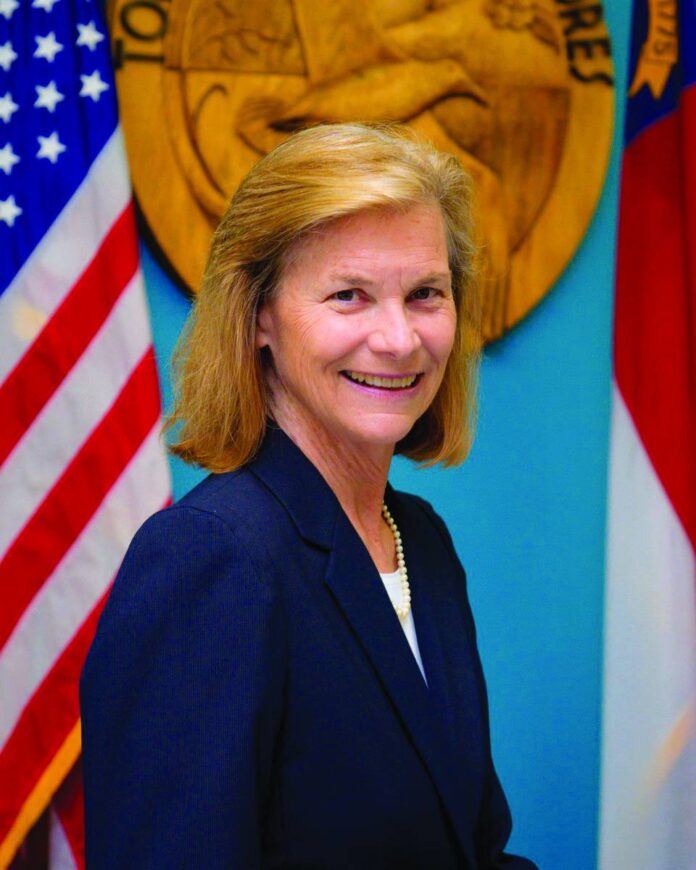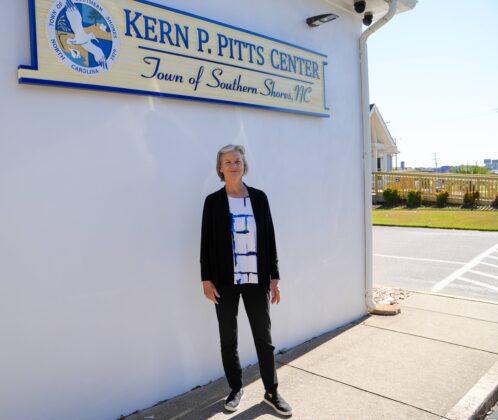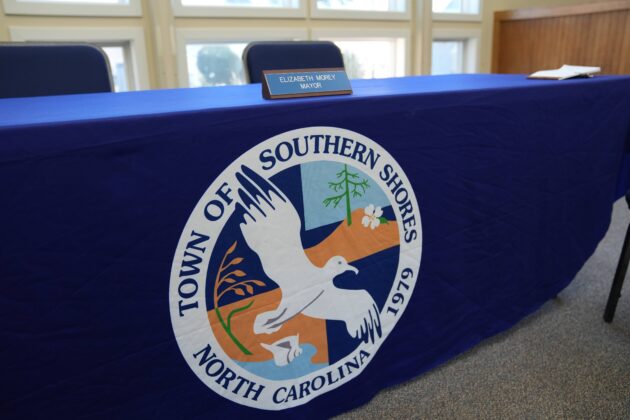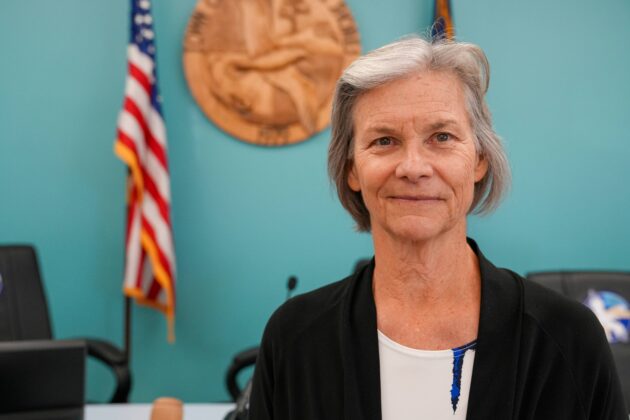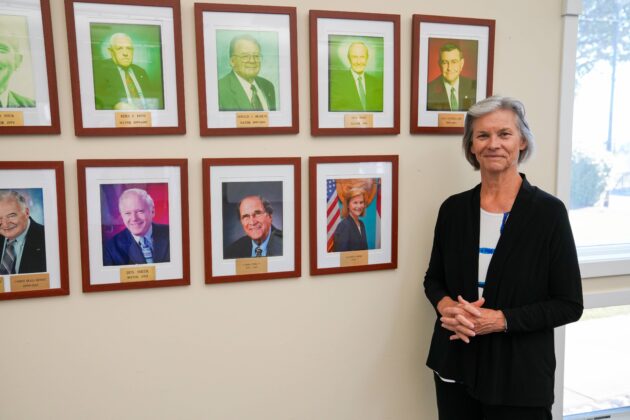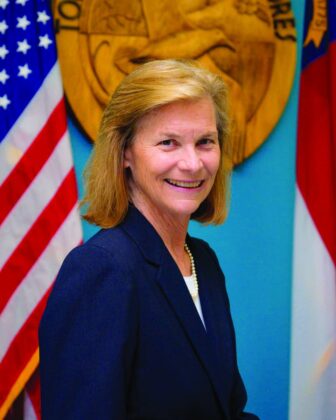Through community engagement and a citizen-first approach, Morey ensures Southern Shores is not just a top-tier beach destination, but also a true hometown.
If you live in Southern Shores, there’s a good chance Mayor Elizabeth Morey has knocked on your door.
“I know what the problems are and who’s being impacted. Because they’ve told me,” Morey says. Between campaigning and her tenure as mayor, it’s been hundreds and hundreds of door knocks and front porch meetings. “It turns out, if you listen, a lot of people will talk to you.”
What she finds in those conversations is, above all else, a shared appreciation of their community. “Even when I’d ask what they didn’t like or what they would like to see addressed, they always start with, ‘I love living in Southern Shores,’” Morey says. “And I say, ‘Good, because I love living in Southern Shores, too!’” On the Outer Banks, to like where you’re at is a prerequisite.
To understand Mayor Morey, it’s best to first understand her town. By Census count, Southern Shores hosts just over 3,000 full-time residents, though the summertime crowd numbers in the tens of thousands and is located on the northern Outer Banks in Dare County, along with the towns of Nags Head, Kill Devil Hills, Kitty Hawk and Duck, among other communities. One north-to-south road connects them all. These areas are not identical, though. “Just like each town has its own distinct borders, each town also has its own distinct personalities,” Morey says.
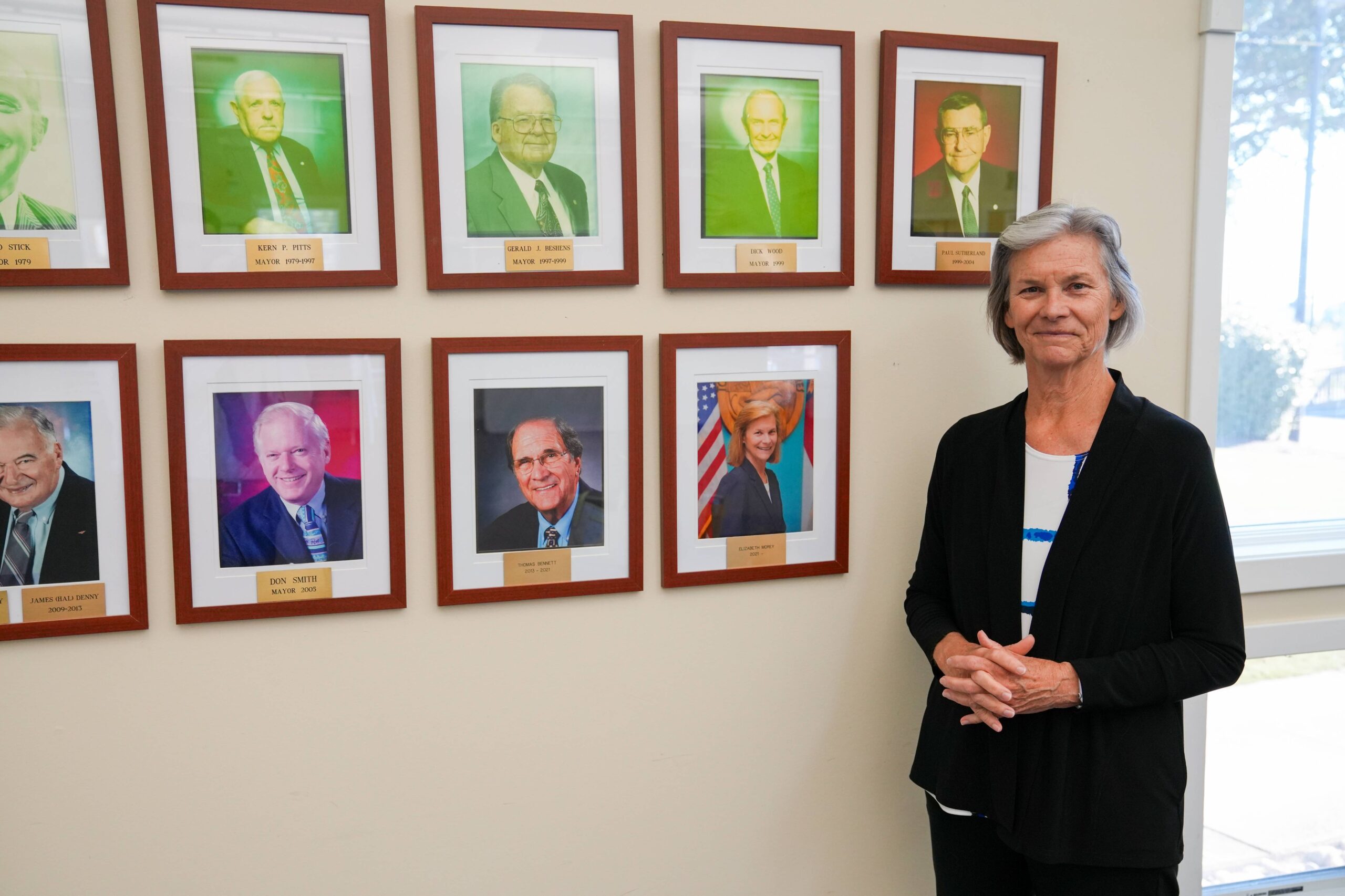 What sets Southern Shores apart from its neighbors is a focus on residential housing. While still a vacation destination, many full-time residents of the Outer Banks find their way to Southern Shores, says Morey, who notes that only about 5% of the town’s development is dedicated to commercial activity. “It’s a unique footprint,” Morey says. “The entire oceanfront is residential.”
What sets Southern Shores apart from its neighbors is a focus on residential housing. While still a vacation destination, many full-time residents of the Outer Banks find their way to Southern Shores, says Morey, who notes that only about 5% of the town’s development is dedicated to commercial activity. “It’s a unique footprint,” Morey says. “The entire oceanfront is residential.”
Accompanying that hometown makeup is a strong local sense of volunteerism. Local community groups are the engine of Southern Shores, as Morey describes, from fire response to recreation to beach access to marinas. All of it, and more, is overseen by a network of civic organizations. “We pride ourselves on being a residential community, and on being a community of volunteers,” Morey says. “That’s who we are.”
Still, a residential town on the Outer Banks is far different than a residential town elsewhere in the state, and for a local government that distinction brings with it a host of unique challenges and circumstances. The tourist towns of North Carolina have an impact that expands far beyond the traditional metrics of population or land mass. There is the economic impact, of course, capturing the commercial activity of the many visitors and vacationers. But maybe more important is the larger reputational impact of these destinations that, like an ambassador, have an outsized role in representing the state as a whole. To many thousands of people, a trip to North Carolina simply means a trip to the beach.
That’s just one of the weights carried by Southern Shores and towns like it. And as a longtime visitor herself, it’s a fact Morey knows full well.
Morey grew up in the greater Dallas area of Texas before moving with her family to Atlanta when she was in middle school. That relocation started her slow pilgrimage north, first moving out of Georgia to attend school in South Carolina at Clemson, then moving again for work to North Carolina, where she also got her master’s degree at NC State. Finally, after several decades in the state, Morey and her husband moved to the coast.
“Southern Shores was a place we loved to visit,” Morey said of the move. “We still think it’s one of the most beautiful places to live. It was a goal. We achieved it and we’re proud of it.”
Finding public office was not part of that plan. At the same time, as Morey admits, it is not wholly unexpected. Her career was largely centered around public resources, if not exactly the public sector, working as a forester and then later in regulatory research at the NC Department of Environmental and Natural Resources (now the Department of Environmental Quality). Politically, Morey also helped with numerous campaigns, canvassing, and door-knocking during this time.
She remembers the pull towards public service beginning back as early as her childhood days in Atlanta. Morey’s parents were exceptionally community-oriented and, through their work purely as active citizens, were adept at achieving change locally. Morey points to one specific example:
“When we moved to Atlanta, there was no recreation. You had to drive miles and miles and miles to get to a public swimming pool, which was unusual for them because they moved from Dallas and there were swimming pools everywhere. So, they took it upon themselves to meet with the developer and get land donated. Then, we drummed up community support, and before you know it, we had a community swimming pool and tennis court in our neighborhood. No small feat.” The local organizing achievement rightfully caught the attention of developers and local leaders in the community, and Morey’s father was soon asked to join the Planning Board.
“I don’t know if you could do that now,” Morey says. “But we did. He pulled it off.” Morey’s father served on the Planning Board for more than 20 years. “I was just a kid growing up, so I didn’t know a lot of details. But I was exposed to it.”
Upon moving to Southern Shores, she followed those same footsteps, joining the Planning Board first as an alternate, then as a regular member, and then as the chair. She served for eight years.
In the arena of local leadership, there are few better introductions to the scope of local government than planning. Zoning, land use, permitting—these responsibilities are uniquely local and affect nearly all other services offered by a local government. Morey was in the middle of it, albeit in just an advisory role. “Eventually, I wanted to not just offer advice to the decision-makers,” she said. “I wanted to be one of the decision makers.”
She made the leap in 2019, running as part of a four-person race for three open town council seats. She won. After one term, she made another leap and ran for Mayor. She won again, becoming the first female mayor in the history of Southern Shores. The beach-side wall in the Town Council chambers features framed headshots of all the town’s mayors. “It’s me and the boys, I like to say,” said Morey.
Morey’s experience as a public official did not begin easily. It began with a pandemic. Taking office in December 2019, Morey had only a few relatively normal months before the onset of the COVID-19 crisis in March 2020. Southern Shores, working with its neighboring towns, had to respond to a complete upheaval of the normal routine of the Outer Banks, which included briefly closing the bridge to the island, concerns about adequate groceries and resources for the residents, and, of course, the disease itself. “All my, ‘I want to work on improvements, I want to work on infrastructure,’ my whole list of things—it had to wait,” Morey said.
As the pandemic and related public safety measures began to unwind, old challenges began to rush back in. Challenges that beach communities know intimately.
“They’re called changeover days,” Morey says.
Changeover days: Saturdays and Sundays from May to October, typically. The Outer Banks is slim and long, and running that length is just two roads. In tourism season, ‘Changeover Days’ are when the current crop of visitors departs their rentals, and the new crop of visitors arrives. They come and go at the same time, trying to access or leave any number of the area’s towns. Southern Shores is right in the middle of it.
“It’s an intractable problem,” said Morey. “Any public meeting, any roundtable, any community chat—traffic is the first thing that’s mentioned.”
There’s no room for more roads. There’s not much way to convince visitors to travel midweek as opposed to the weekends. And there’s no way to reach destinations without driving. Solutions, then, must be incremental and creative.
“One way that we improved the situation this past summer is by keeping drivers on the main roads and out of the neighborhoods.” They did so by working with the traffic navigation app Waze, which drivers use to find the quickest routes to their destinations. At the town’s request, Waze stopped pointing drivers towards side streets and neighborhood roads. “It helped.”
Housing has grown as an issue in Southern Shores, as it has in many other cities nationally. With new ways of working post-pandemic, more remote employees now call Southern Shores home full-time. That has contributed at least partly to a significant demand for new housing on the Outer Banks. And as perhaps the most residential-focused town on the island, Southern Shores has acutely felt that pressure. New builds, renovations, and proposed developments are all up. How to make room for residents, new arrivals and visitors is a question Mayor Morey must answer each day.
Housing and changeover traffic, in addition to other local challenges like beach nourishment and hurricane resilience, follow a pattern familiar to Southern Shores. It’s a surge, then a lull. From summer to winter, it’s like two different places and two different communities, and two different sets of priorities. Keeping services, engagement and leadership steady through the tumult is a top requirement of the job.
Mayor Morey accomplishes it by talking to people. “It’s one of the things I did after my two experiences of running for office: talking to people at their front door.” Taking that outreach one step further, Mayor Morey instituted Mayor’s chats, which are an opportunity for town residents to openly share their thoughts with town leaders.
“It’s the opportunity for people to have somebody to listen to them,” she said. “Sometimes a lot of people come, sometimes only one person comes.”
For a role that changes by the season, her approach to engagement and outreach is one that yields results.
“The people here know, if you want to be heard, I am there to listen.”
Southern Shores and the American Rescue Plan
Like many towns across North Carolina, Southern Shores is investing its American Rescue Plan funds into transformational infrastructure upgrades. Specifically, it is addressing a bridge.
Southern Shores features an extensive canal system, and the bridge in question crosses one section. It is frequently noted among the citizens as an area to improve, both in terms of safety and structural integrity.
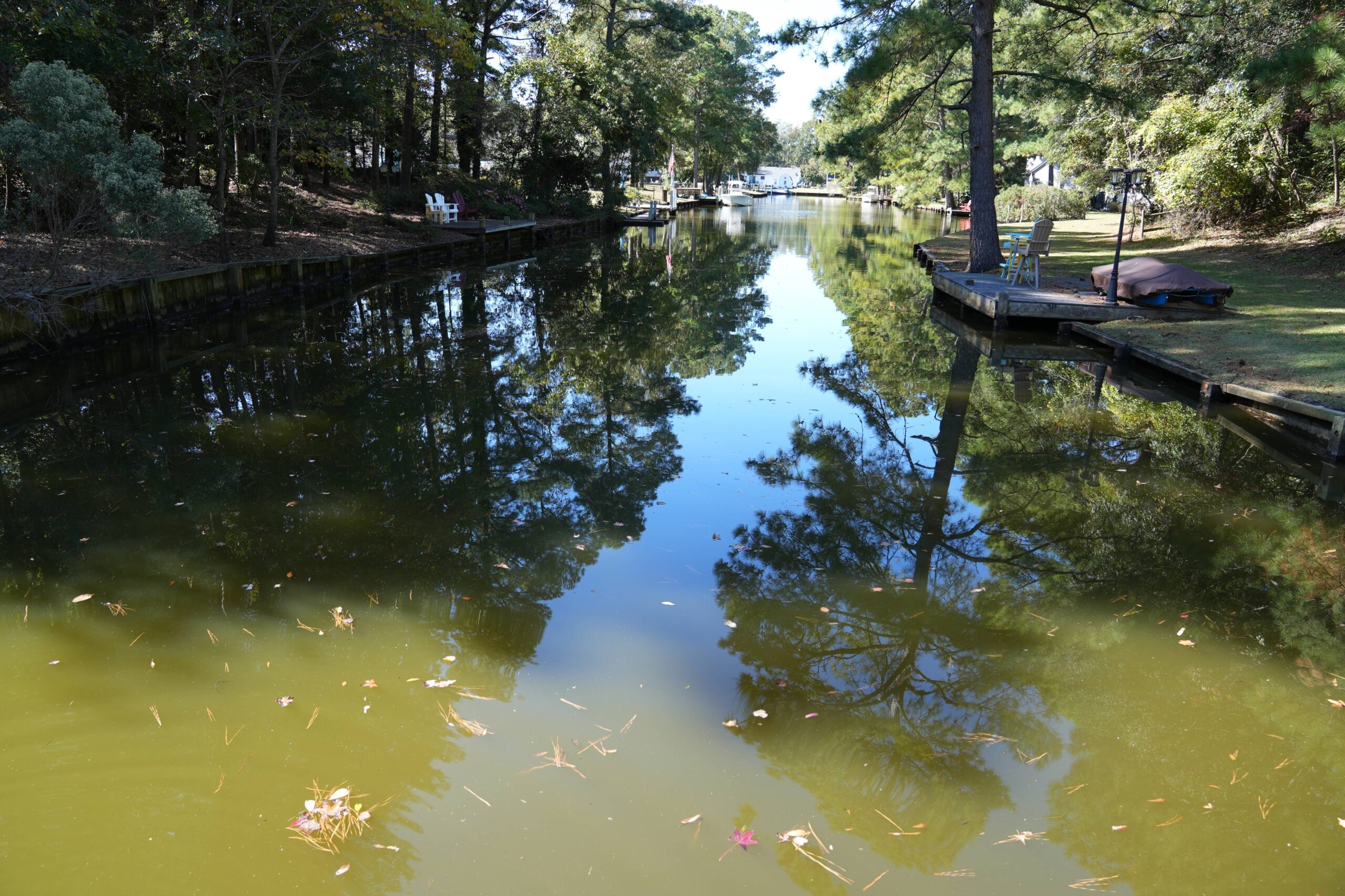 Southern Shores and NCLM’s ARP Service Line
Southern Shores and NCLM’s ARP Service Line
ARP dollars were allocated based on residential population, so similar to many tourism-heavy towns, Southern Shores received a relatively small amount of money—just under $1 million—compared to the number of people that will ultimately use the infrastructure.
So, Southern Shores is leveraging NCLM’s ARP service programs to make that money go as far as possible—and to find additional funds.
The town is taking part in NCLM’s grant writing program. This assistance offering pairs municipalities with grant writing professionals, who will apply for the many federal and state funding programs currently available. This program allows towns with limited staff capacity to adequately prepare and apply for grants, and, when awarded, will continue to assist towns with managing the funds.
“There are grant opportunities out there,” said Mayor Morey. “And this is going to help us take advantage of them.”
